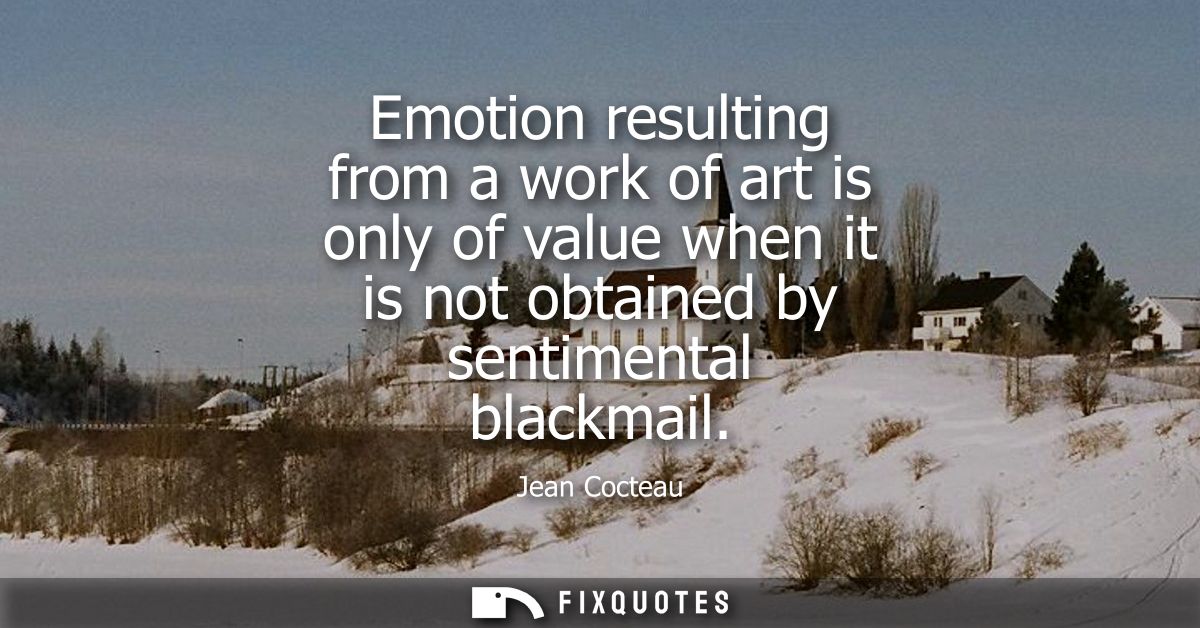"Emotion resulting from a work of art is only of value when it is not obtained by sentimental blackmail"
About this Quote
Jean Cocteau’s assertion that emotion arising from a work of art holds value only when it is free from sentimental blackmail invites a distinction between genuine emotional engagement and manipulation. Art has the extraordinary capacity to move audiences deeply, to provoke empathy, wonder, sadness, or joy. Yet, there’s a critical difference between emotions authentically awakened by the internal qualities of the artwork, its insight, beauty, truth, or originality, and reactions coerced by heavy-handed tactics or emotional shortcuts.
Sentimental blackmail describes a process whereby an artist attempts to extract emotion from an audience through means that bypass true artistic merit. This could include melodramatic plot twists, overly saccharine imagery, or deliberate appeals to nostalgia and pity. Rather than allowing the audience to encounter and respond to the work’s complexity, the artist stacks the deck, emotionally cornering the viewer into feeling something predetermined. The result may be powerful in the sense of intensity, but it lacks integrity and tends to dissipate quickly, exposing the artifice behind the manipulation.
Valuable emotion in art emerges when the viewer’s feelings are a natural and organic result of engaging with the work. Such emotion arises from honest confrontation with the subject, recognition of universal human experiences, or surprise at a novel perspective, all fostered by the artist’s skill and sincerity. In these moments, the audience isn’t forced to feel; they are moved by the artwork’s truth, not by its demand for sympathy or tears.
Cocteau’s idea ultimately champions respect for the audience’s emotional intelligence and the dignity of art itself. Emotion should not be a byproduct of craftiness or exploitation, but a mark of art’s genuine communicative power, arising from authenticity, subtlety, and profound connection between the work and its beholder.
More details
About the Author

